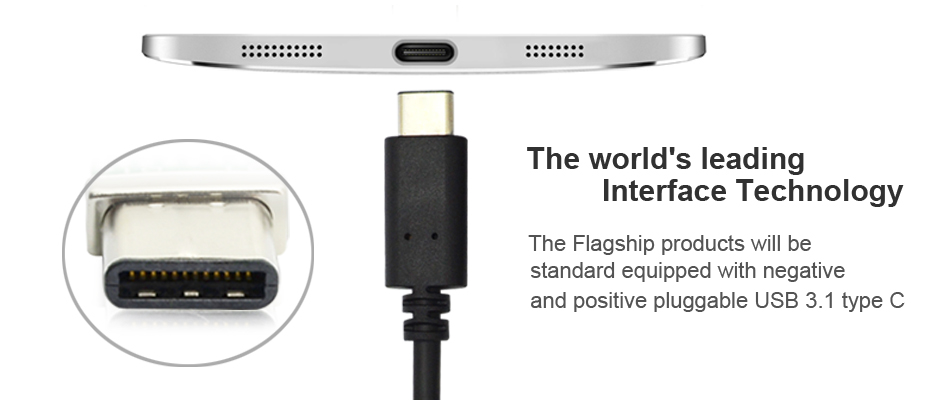3.5mm audio vs USB Type-C
3.5mm audio vs USB Type-C
There’s a growing trend among smartphone manufacturers to do away with the 3.5mm audio jack that has long been the standard connector for a huge range of audio equipment over the past century. Motorola’s new Moto Z doesn’t feature a 3.5mm audio connector, neither does LeEco’s latest range of smartphones, and Apple has long been rumored to do away with the socket this year too.
While some audio enthusiasts are reluctant to see the death of a long running and highly successful standard, others are ready to embrace new technology and some of the benefits that are being promised along with it. So let’s take a look at the good, and the future of what USB Type-C audio is going to mean for smartphone and music enthusiasts.
What’s this all about?
To start, let’s go into a little bit of background about the old 3.5mm jack socket and the new proposals being put forward by USB Type-C. The major difference is that the 3.5mm connector transfers stereo analog audio out of the socket, meaning that all of the digital conversion and headphone driving components are housed in the smartphone.
The new USB Type-C standard is proposing a different take on this old formula, opting to transmit digital audio data over the connection instead. This will then leave the headphones or other connected devices to convert this data into an analog signal and to drive the speakers themselves. This of course requires power, but that can also be sent over the same USB port. Interestingly, the USB Type-C socket is still capable of transferring analog audio too, but we’ll talk more about that in a moment.
The Good
One of the benefits being touted about the move over to USB Type-C “digital” audio is that it will improve music quality. While this may be true to some small extent, it’s not necessarily going to be the case automatically and there’s going to be a lot of marketing nonsense to navigate.
As we said, the big change with USB Type-C audio is that rather than sending analog signals over the wires to the headphones, only a digital signal will be sent. The digital-to-analog converter, filtering circuits, and headphone amplifier will then all be housed in the headset near the headphones. Moving this circuitry slightly closer to the final headphone output might help remove some noise that’s picked up by long headphone cables and will keep important audio circuitry further away from noisy processing and radio hardware found inside phones.Headset manufacturers will be free to pick top quality DAC and amplifier components
Good headphone manufacturers may also be able to produce superior circuit board layouts to those in today’s smartphones, which could produce better noise and lower cross-talk characteristics. Not only that, but headset manufacturers will be free to pick top quality DAC and amplifier components, and custom design and tune these circuits for their speakers. This would free consumers from being tied to whatever their handset manufacturers decide to include. This isn’t to say OEMs are picking notably poor quality audio parts for their smartphones these days, so this would probably only be useful in lower cost smartphones (which likely won’t see USB Type-C support for a while yet). Cheaper headsets might opt for inferior DACs to save on costs, as well.
USB can transfer more than just digital audio,Of course, USB can transfer more than just digital audio. This also opens the door for advanced communication between hardware, so high-end headphones may be packed with additional hardware and software features. The volume, play, pause, and skip functions that are included in some smartphone headphones could be made more reliably compatible, and could also be augmented with shuffle, navigation, and even EQ options. Furthermore, digital processing options included in headphones could be accompanied and controlled by dedicated smartphone apps, giving users control over the sound of their headsets from the palm of their hand.
noise cancelling is another feature being touted as one of the big benefits of moving over to digital audio, as the signals can be processed inside the headphones. You can already pick up very good battery powered noise cancelling headphones that sport a 3.5mm audio connector, so really, USB Type-C is only offering a more reliable power supply and perhaps a slimmer form factor for noise cancelling headphones.
Speaking of slimmer form factors, one of the other potential benefits by removing the 3.5mm jack is that this will save a small amount of space. Manufacturers could make their smartphones slightly thinner, or use this space saving to include a marginally larger battery. We’re clearly not talking about a major space saving, but every millimeter helps when it comes to smartphones.
Looking further into the future, USB Type-C isn’t just about transferring files and audio, the specification is also looking to replace HDMI as a display cable. In the future, products with USB Type-C ports could be everywhere, allowing for straight forward connections between devices for additional functionality. Home cinema setups, speaker systems, and other home gadgets could all connect up to your headphones and smartphones via USB. Today’s early manufactures are just getting there ahead of the curve.

 Email
Email Asking price
Asking price